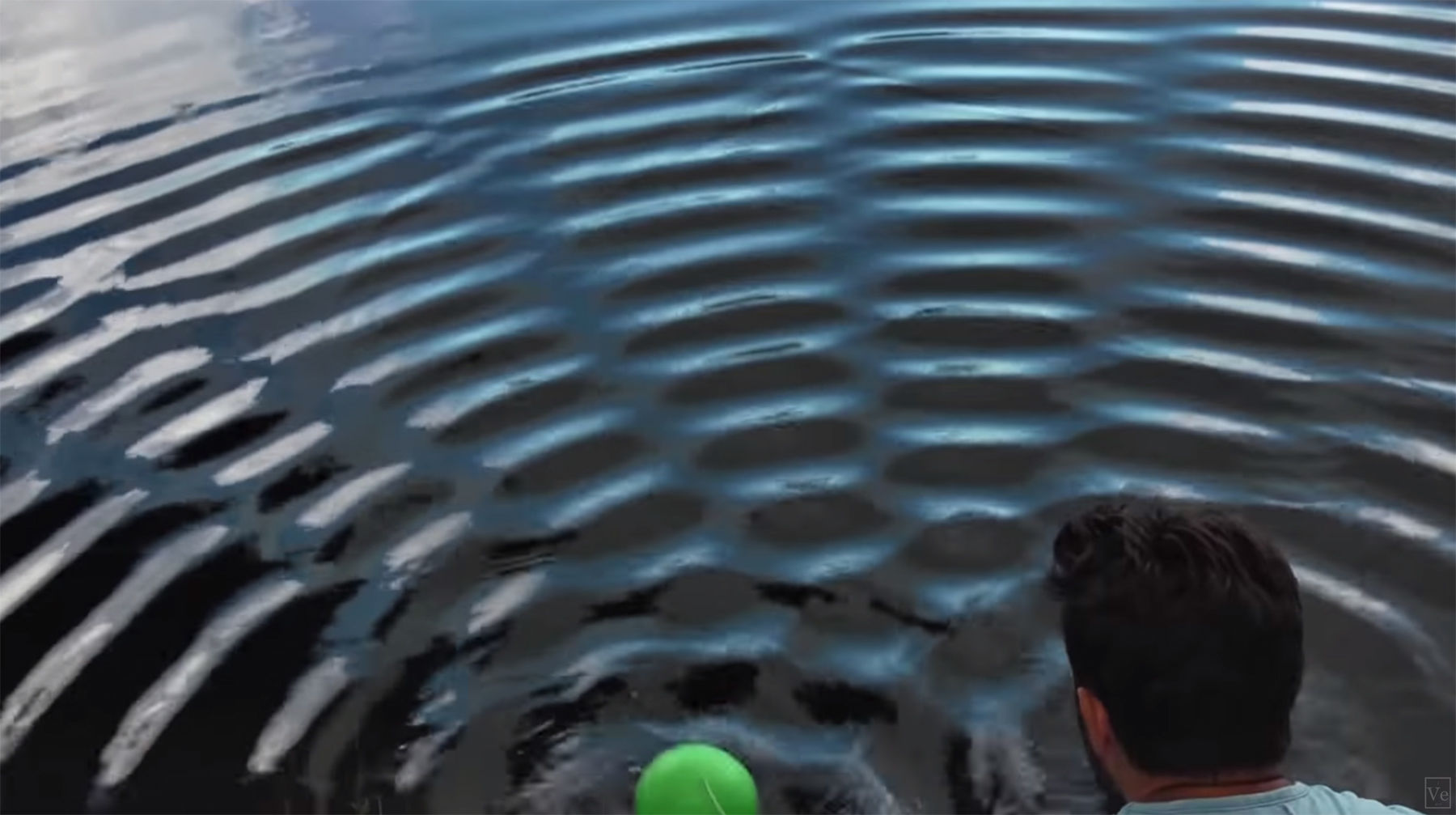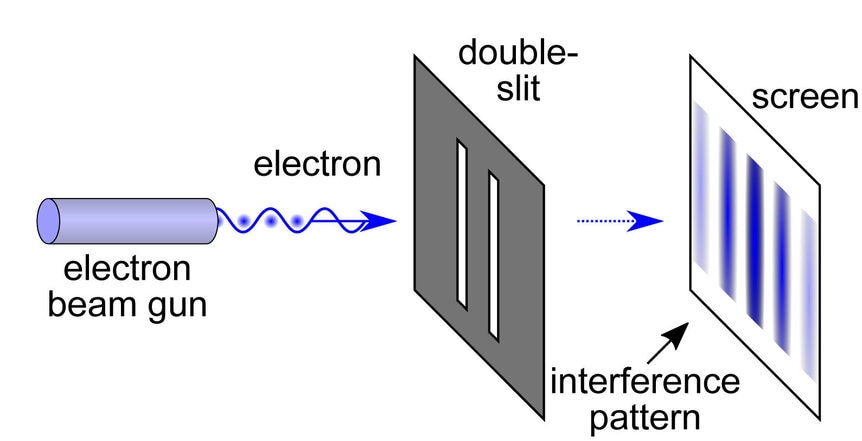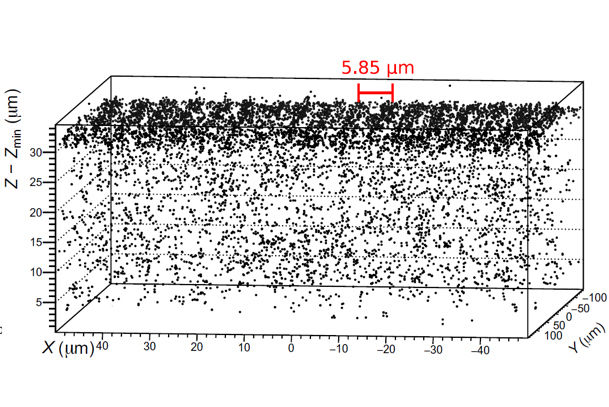Create a free profile to get unlimited access to exclusive videos, sweepstakes, and more!
Scientists see a bizarre quantum effect in antimatter for the first time

We just got one small very weird step closer to Star Trek.
Kinda. But this is still exceptionally cool: Scientists have, for the first time, been able to get positrons to interfere with each other in a classic (if I can use that word in this context) quantum mechanics experiment. That’s the first time antimatter has ever been successfully tested this way.
There’s a bit to break down here. Some of it is pretty straightforward, but look, I’ll be honest here, some of it is quantum mechanics which means it’s weird and brain-hurting and will try to grind your common sense into tiny particles. That’s OK. That’s what QM does.
So. Positrons are the antimatter equivalent of electrons. They are, as far as we know, exactly like electrons, except they have a positive charge instead of a negative one. Now, if you let a positron and an electron get too close together, they’ll annihilate and disappear in a puff of (extremely a lot of) energy. But all by themselves positrons are just happy to exist and do subatomic things, just as electrons do.
OK. Now set that aside for a minute while we go into a bit of QM.
You were probably taught that electrons are particles, which means they act like little billiard balls or ball bearings whizzing around. In many cases, treating them that way works fine. The equations of classical physics predict what electrons do as if they were little solid spheres.
But they’re not. Not really. There are times when, bizarrely, electrons act like waves. When you think of a wave, you probably picture a rolling hummock moving through water. You can think of that as one part of the wave where the water has piled up a bit and then, just beyond, the water level falls down even lower than the sea surface. Those are the crest and the trough of a wave. There’s also a distance between each crest as they roll in; that’s the wavelength.
Knowing just this info about a wave tells you a lot about it, and if you know its speed you’ve got everything. You know everything you need to describe this wave mathematically.
Electrons can act this way. They behave like a wave moving through space, with a crest and trough and wavelength and everything. This was proven in the 1920s with a famous test called the Double Slit Experiment.
Honestly, explaining how this works would take a thousand words easily, so instead watch this short video by my old friend Derek Muller of Veritasium. He shows how this works with light as well as water, and makes this pretty clear:
[I love the guy in the yellow polo shirt. Science communicators dream of reactions like that!]
Here’s the thing: The Double Slit Experiment works with light, but it also works when you shoot electrons through the slits as well. If they were strictly particles that wouldn’t happen; they’d just pass through the slits and the pattern that builds up would be two parallel lines. Instead, you get a distinct interference pattern, meaning that electrons have to act like waves*. It turns out every particle is like a wave, too, and really anything made of matter. You act like a wave, though you’re macroscopic, so the waves are very mushy and essentially impossible to detect. You’re not small enough. You have to go quantum.
So, if electrons act like waves when they pass through the slits, what about anti-electrons? What about positrons?
Well, like I said, as far as we know they’re exactly like electrons but have a positive charge. So they should behave exactly like electrons do passing through the slits, and create an interference pattern, too. The thing is, physicists don’t like to just assume the Universe really acts like the theories say, because — and don’t tell anyone this† — sometimes theories don’t work. If that’s the case then we need to test them, see where the ideas fall short, and modify them to better fit what’s seen.
So running through the Double Slit Experiment with positrons is an important test to make sure we still have the fundamentals right.
And that’s what this new research is about. Handling positrons is difficult, and measuring where they hit a screen is hard as well. If they hit an electron while they’re whizzing around, BANG! You get a pair of gamma rays instead of the particles you need.
But they found a way to handle all this, ran the test, and got fringes! That is, when they shot the positrons through the slits, they built up an interference pattern. It took a while; they had to run the experiment for over 100 hours to get enough data to be sure. And they ran it multiple times, each time giving the positrons different energies (that is, different momenta, which changes their wavelength and affects the spacing of the interference pattern) to make sure they got the results they expected.
And they did. Now this experiment, though very clever, is still a first attempt, and the data, while lovely, are noisy. This test will have to be done with bigger contraptions and finer resolution to really see if all the numbers for the waves are the same as electrons to be sure. But I expect that’s what we’ll see.So antimatter really is just like matter, but with an opposite charge!
… or is it? This just shows they act like waves the same way. But there’s a long-standing argument about how antimatter behaves in gravity.
Simply put: Does it fall up?
Now mind you, as I understand it the standard model of how this all works says they should fall down. Mass doesn’t have a corresponding negative mass, so anything with mass should fall downward under the influence of gravity. That includes antimatter.
But here’s that thing again. Physicists want to test this assumption. That’s very hard to do because again antimatter is hard to handle, and, worse, gravity is a weak force. Measuring its effects on teeny subatomic things like particles requires incredible precision.
But it’s possible. This experiment will, hopefully, show others how to better measure positrons, so that more experiments can be designed to poke and prod them.
Look, I grew up on Star Trek. I still love it. So anything that helps us understand antimatter? Yeah. Engage warp speed.
And indulge me for one more thing. The experiment’s name is Quantum interferometry and gravity with Positrons and LASers. The researchers spell it out as QUPLAS.
I suspect there’s a Trek fan on their team, too.
*As if that’s not weird enough, it gets a lot, lot more bizarre, but you don’t need to go any farther to understand what I’m going to say here. But, if your brain needs a good punch to the cerebrum, this article talks about the Observer Effect a bit, and the embedded video there will help as well. Mind you, this effect is a very big and very subtle topic that quantum physicists still argue over, so don’t sweat it here).
†Wait! I mean tell everyone this, since so many people misunderstand science!





























